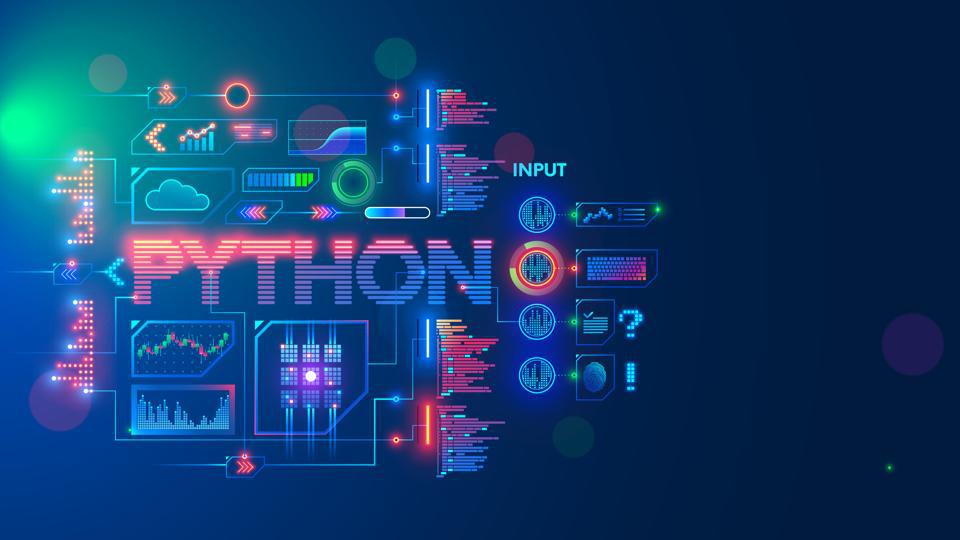Python, celebrated for its simplicity, readability, and adaptability, has become a cornerstone in the technology realm. From web development to data science, artificial intelligence to automation, Python’s impact resonates across various domains. In this exhaustive examination, we embark on a thorough exploration of Python, uncovering its origins, fundamental features, practical applications, community dynamics, and future potential.
Unveiling Python’s Origins:
Python’s inception traces back to the late 1980s when Guido van Rossum, a Dutch programmer, sought to create a language emphasizing simplicity and readability. Dubbed after the British comedy group Monty Python, Python aimed to be intuitive and accessible, boasting a syntax reminiscent of pseudocode. Guido’s vision and meticulous design laid the groundwork for what would evolve into one of the most widely used programming languages globally.
Embracing the Pythonic Philosophy:
At its core, Python embodies a set of guiding principles known as the Pythonic philosophy. This philosophy champions clarity, simplicity, and elegance in code design. Infused by Python’s creator, Guido van Rossum, these principles cultivate a community culture valuing readability, explicitness, and practicality. More than just rules, the Pythonic philosophy fosters a mindset encouraging developers to craft code that is not only functional but also easily comprehensible and maintainable.
Core Features and Syntax:
Python’s syntax is known for its cleanliness, conciseness, and readability, making it accessible to beginners and seasoned developers alike. Its indentation-based block structure promotes code readability while minimizing the need for explicit delimiters, such as braces or semicolons, found in other languages. Dynamic typing and automatic memory management simplify development by allowing developers to focus on problem-solving rather than low-level details.
Python Ecosystem and Libraries:
Python’s extensive ecosystem of modules and frameworks that support a wide range of jobs and domains is its greatest asset. From web development to scientific computing, machine learning to data analysis, Python offers libraries and frameworks that expedite development and enhance productivity. Widely used libraries like NumPy, Pandas, Matplotlib, TensorFlow, and Django have become indispensable tools for developers across various fields.
Python in Web Development:
Python’s simplicity and versatility have made it a preferred choice for web development. Frameworks like Django and Flask provide robust tools for building web applications, APIs, and microservices. Django, renowned for its “batteries-included” philosophy, offers a high-level framework for creating full-stack web applications with minimal boilerplate code. In contrast, Flask provides a lightweight and flexible microframework enabling rapid development of simple web applications.
Python in Data Science and Machine Learning:
Python has emerged as the language of choice for data science and machine learning due to its rich ecosystem and user-friendly nature. Libraries like NumPy and Pandas facilitate data manipulation and analysis, while Matplotlib and Seaborn offer powerful visualization capabilities. TensorFlow and PyTorch are widely utilized for building and training machine learning models, while scikit-learn provides a comprehensive suite of tools for various machine learning tasks.
Python in Automation and Scripting:
Python’s versatility extends to automation and scripting tasks, owing to its simplicity and extensive standard library. Modules for file I/O, networking, and system administration streamline automation workflows. Python’s scripting capabilities enable developers to automate repetitive tasks, develop custom tools, and integrate disparate systems seamlessly. Popular automation tools like Ansible and SaltStack leverage Python as their scripting language, facilitating large-scale infrastructure automation.
Python in Education and Community:
Python’s accessibility and ease of learning have positioned it as a prominent choice for programming education worldwide. Its clear syntax and wealth of educational resources make it an ideal language for beginners. Python’s thriving community, comprising developers, educators, and enthusiasts, drives its growth and evolution through collaborative projects, conferences, and online forums.
Python’s Future Outlook:
Looking forward, Python’s future appears promising, buoyed by ongoing technological advancements and a vibrant community. As new challenges emerge in artificial intelligence, data science, and cloud computing, Python is poised to retain its leading position in innovation. Its adaptability, simplicity, and community-driven development model ensure Python will evolve to meet the evolving needs of developers and users alike.
Conclusion:
In conclusion, Python’s evolution from a modest beginning to a globally embraced programming language underscores its simplicity, versatility, and community-driven ethos. Whether you’re a novice programmer or a seasoned developer, Python offers a welcoming environment for exploration and innovation. As we navigate the ever-evolving landscape of technology, Python will undoubtedly remain a guiding force, shaping the future of computing for generations to come. For those seeking to embark on their Python journey, exploring a Python Training Course in Navi Mumbai, Mumbai, Thane, Delhi, Noida and other cities can provide a structured and supportive learning environment to acquire the necessary skills and expertise.





